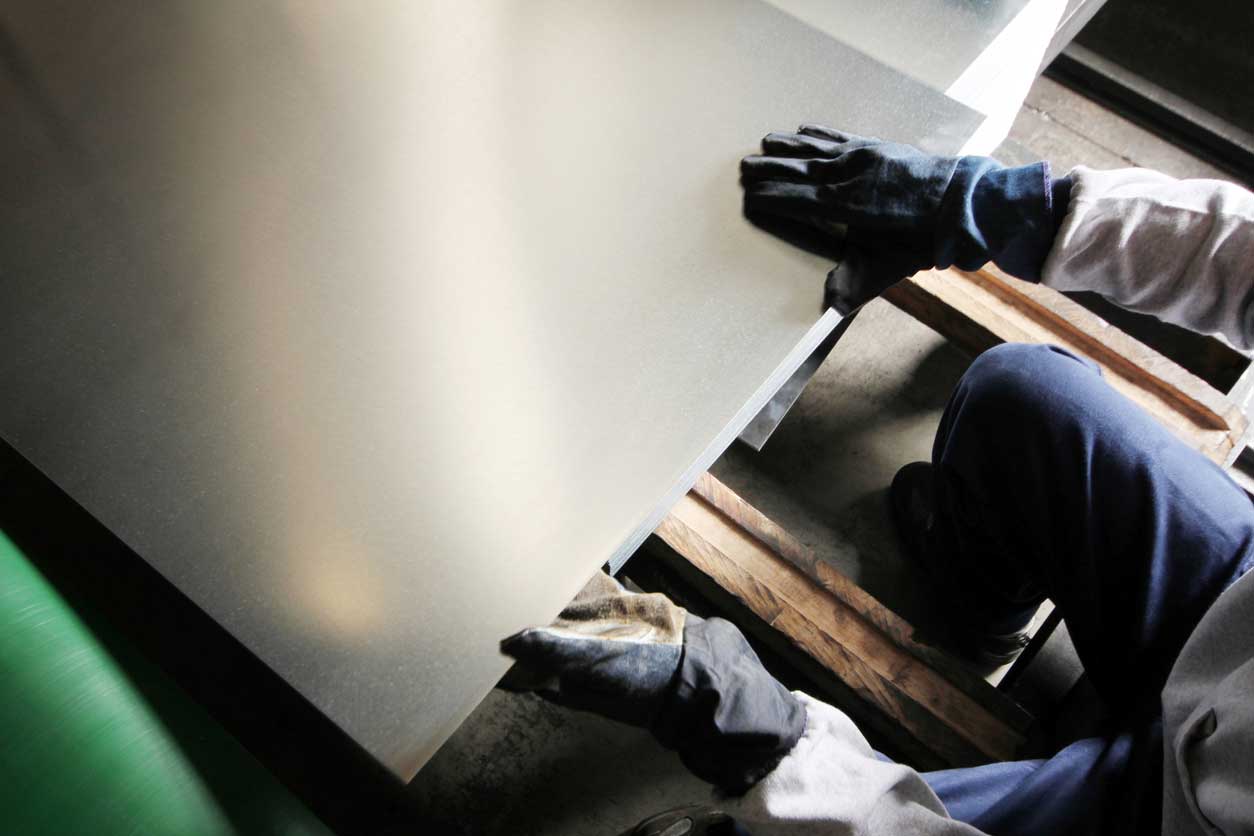
Metal fabrication encompasses a variety of processes that alter flat metals so they conform to specific shapes. There are multiple metal fabrication techniques used in custom fabrication and related processes. See an overview of the various processes and materials used in metal fabrication here.
Multiple Processes
Cutting, casting, forging, punching, drawing, milling, drilling, turning, and extrusion can all be parts of the fabrication process for multiple applications. See a deeper exploration into each of these steps below.
Cutting
The common options for cutting in metal fabrication are waterjet and laser cutting. Since a waterjet uses cold water, it is ideal for any project in which a heat-affected area of material would cause complications or inefficient processes. This can include aerospace applications and any metal projects that need to go straight from the cutting process to welding. Alternatively, laser cutting is precise, fast, and requires less cleanup, making it another viable option for efficient sheet metal cutting.
Casting, Forging, Punching & Drawing
Casting is the process of putting molten metal into a mold to create a specific shape. The imprint in the mold may be one-sided, with the metal poured onto the top and left to cool, or two-sided with either a vertical or horizontal split, creating two halves of a pattern that must be clamped together to form the whole. Forging involves shaping through hammering, pressing, or rolling. It differs from casting in that the material is solid, although often heated, while being shaped.
Punching uses a die to leave a hole in a piece of sheet metal. In drawing, metal is stretched to become thinner, in order to become a specific shape and thickness.
Milling, Drilling & Extrusion
Milling is a machining process that uses rotating cutters to cut in different directions on multiple axes. Similarly, drilling uses a drill bit rotating at high speeds to cut a hole into a material. Also a machining process, turning uses a lathe to cut unwanted material in order to create rotational parts. Lastly, extrusion involves forcing hot or cold metal through a die in order to shape it.
Material Options
Multiple raw materials can undergo metal fabrication processes depending on the project, including aluminum, steel, copper, bronze, tin, gold, magnesium, iron, silver, brass, and nickel. Below is an overview of several common materials and their ideal uses.
Aluminum & Steel
Aluminum is lightweight and versatile, but does not perform well at high temperatures, making it ideal for aerospace applications or any uses requiring low temperatures or refrigeration. Steel is the most widely used material and has applications for multiple industries, including the industrial, construction, and weapons industries. Stainless steel is highly resistant to corrosion, making it the ideal choice for surgical tools and food & dairy applications.
Copper & Bronze
Copper is durable, conducts electricity easily, and is also highly corrosion resistant, making it suitable for industrial applications. Bronze is strong and heavy, making it valuable for weaponry purposes.
Tin & Precious Metals
Tin is often used as an outer casing for other metals like steel due to its natural surface finish, and its resistance to corrosion also makes it ideal for some outdoor uses. Gold can be melted and cast into incredibly detailed shapes and does not tarnish, which is why it’s often used in jewelry manufacturing. As recycling is essential in the precious metals industry, both gold and silver products are often fabricated from recycled materials.
Magnesium & Brass
Magnesium is light but stiff and often used in the transportation and aerospace industries. Nickel is strong and highly resistant to corrosion for temperatures at both extremes, and has magnetic and electronic qualities that make it perfect for items using rechargeable batteries. Brass is sometimes used for smaller parts like bolts, nuts, doorknobs, and more.
Steps in the Custom Fabrication Process
At Cameron Manufacturing & Design, we create custom fabrications precisely using a proven process that helps our customers from design to installation. By collaborating throughout the entire process, our engineers and technicians are able to make informed decisions about materials and processes to make sure customers get the most cost- and time-efficient solutions possible.
At the design stage, our mechanical, and electrical engineers can collaborate with designers to provide their insights and expertise. Next, our team will create prototypes to conduct testing and ensure alignment on the final product.
Once a prototype is approved for production, equipment must be programmed for manufacturing that specific component or piece of equipment. Next comes the actual fabrication process, in which the agreed-upon metal material will be shaped into its final form.
Surface finishing occurs in our EPA-approved paint room, which is essential for consumer safety in the food & dairy industry. Setting us a step above competitors, we finish custom services by offering comprehensive assembly and installation support and related on-site modifications if necessary.
CMD Delivers Efficiently Fabricated, Highly Accurate Metal Parts
From engineering and design to manufacturing and installation, CMD’s extensive team of experts is able to create excellent custom metal components and equipment for any application. We have deep experience working with the food, beverage, and dairy, automotive, and rail and transit industries, and beyond.
Our 155,000 sq. ft. facility offers ample storage for raw materials, inventory, and works in progress, as well as a set-aside building dedicated to protecting proprietary projects. With hundreds of highly skilled workers on-site, we’re able to meet and exceed standards for complex metal fabrication projects.
Cameron Manufacturing & Design’s skilled technicians can achieve success for any custom metal fabrication need. Reach out now to discuss our capabilities.
Recent Posts
- Crafting Excellence Bridging Heavy Fabrication and Light Manufacturing
- What is Precision Sheet Metal Fabrication
- Unveiling the Power of Custom Manufacturing Equipment in NY
- Cameron Manufacturing & Design: Your Top Choice for CNC Laser Projects
- The Power of Precision Machining in Custom Metal Fabrication
Trust the CMD Team With Your Next Project
Our highly-skilled team across multiple areas of expertise will deliver a finished product that meets or exceeds your expectations.
